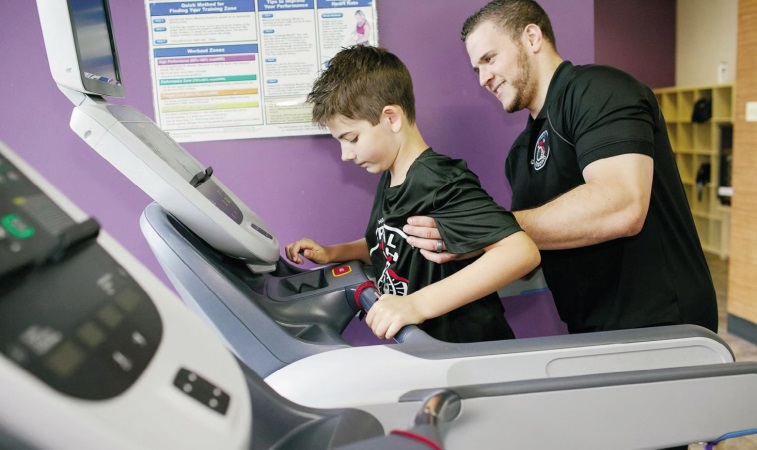
needs, explaining how an exercise routine is done may take more time than usual. With that, do your best to be patient when you communicate and make sure that they understand what you are saying before moving forward with the routine.
PROVIDE A SUITABLE ENVIRONMENT
Some people with special needs can exercise at a traditional gym without any problem. But if that's not the case, providing a suitable environment at home with the nec
essary tools and equipment to do your exercise routines would be your best option. If possible, remove distractions so that you can focus on doing the exercise routine on time.
When it comes to exercise equipment, you can get tension bands, dumbbells, medicine balls or other similar tools to help you execute the exercise routines better.
MAKE IT FUN!
Exercise routines do not have to be boring. This is why if you can make it, you can organize fun games or events that encourage physical fitness.
Go swimming, let them ride a bike, dance, or even play sports. If that seems a lot, a simple game of tag, hopscotch, tickle fights or even jumping rope will be good enough to keep that heart rate going.
These activities may need a few modifications to suit people with special needs, but it will surely make them more engaged in participating in a physical activity than just going with the usual routine.
GOING STRONG : PRACTICAL EXERCISE TIPS THAT YOU CAN DO AT HOME FOR PEOPLE WITH SPECIAL NEEDS
- Know what they are capable of. People with special needs are very much capable of doing exercise. However, they may not be familiar with a new routine which can become a problem. To avoid this, make sure that you match their skill level with a fitness routine and that they understand exactly what you want them to do to perform the exercise well.
- Modify the exercises if needed. Running is good cardio to start with. But if someone is not yet fit to run or do brisk walking, you need to think of other exercise routines that would help them achieve the same benefit without forcing them to hurt their feet or leg muscles unnecessarily, such as swimming. You need to adapt each exercise to the individual needs and abilities of a person with special needs to make the fitness training work to their advantage. This is where adaptive fitness comes in.
- Use adaptive fitness. There is a good reason why training people with special needs is called adaptive fitness. No two people are the same when it comes to their fitness goals. In the same way, no two people who both have special needs have the same goals and abilities when it comes to getting fit. With this in mind, you should know that every activity you can think of doing should be personalized according to the needs of the special needs person that you are dealing with. Most of the time, a regular workout routine consists of three segments: cardio, strength training and rest time. While it’s true that people with special needs must participate in all segments, customization is still important because the exercises that will be placed in each segment will depend on their unique fitness level, skill set and fitness goals.
Here are the top three exercises we recommend for wheelchair users:
KETTLEBELL DEADLIFTS
Start with a 5lb kettlebell on the ground in front of the wheelchair. With a straight back, lift the kettlebell up to the top of your knees. Repeat this exercise for 10-15 repetitions for 3 sets. When the exercise is being done correctly, you will feel the exercise in your hamstrings and lower back.
RESISTANCE BAND ROWS
Attach a resistance band to the top of a door frame using a door anchor that comes from purchasing traditional resistance bands. Once the resistance bands are attached, position yourself facing the resistance band and move your wheelchair until there is no slack in the resistance band while holding the handles. Grab both handles of the resistance band and pull the bands until your elbows are in line with your hips. Squeeze the shoulder blades of the back together while pulling the bands.
LEG EXTENSIONS
Start with both feet on the ground. Slowly lift and extend both legs until the knees are locked. Hold the position for three seconds and lower the feet back to the ground. Repeat this 15 times for 3 sets. To increase the difficulty, add ankle weights.
For equipment, you can purchase the following from Amazon:
Yes4All Vinyl Coated Kettlebell Weights amazon.com/Yes4All-Coated-Kettlebell-Weights- Available/dp/B0093CMYRS
VEICK Resistance Bands Set amazon.com/VEICK-Resistance-Exercise- Portable-Training/dp/B086X4PN48
Gaiam Ankle Weights amazon.com/Gaiam-Weights-Strength-Training- Adjustable/dp/B01M65V335/